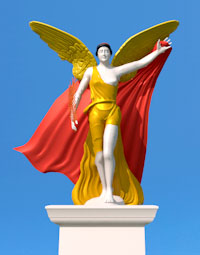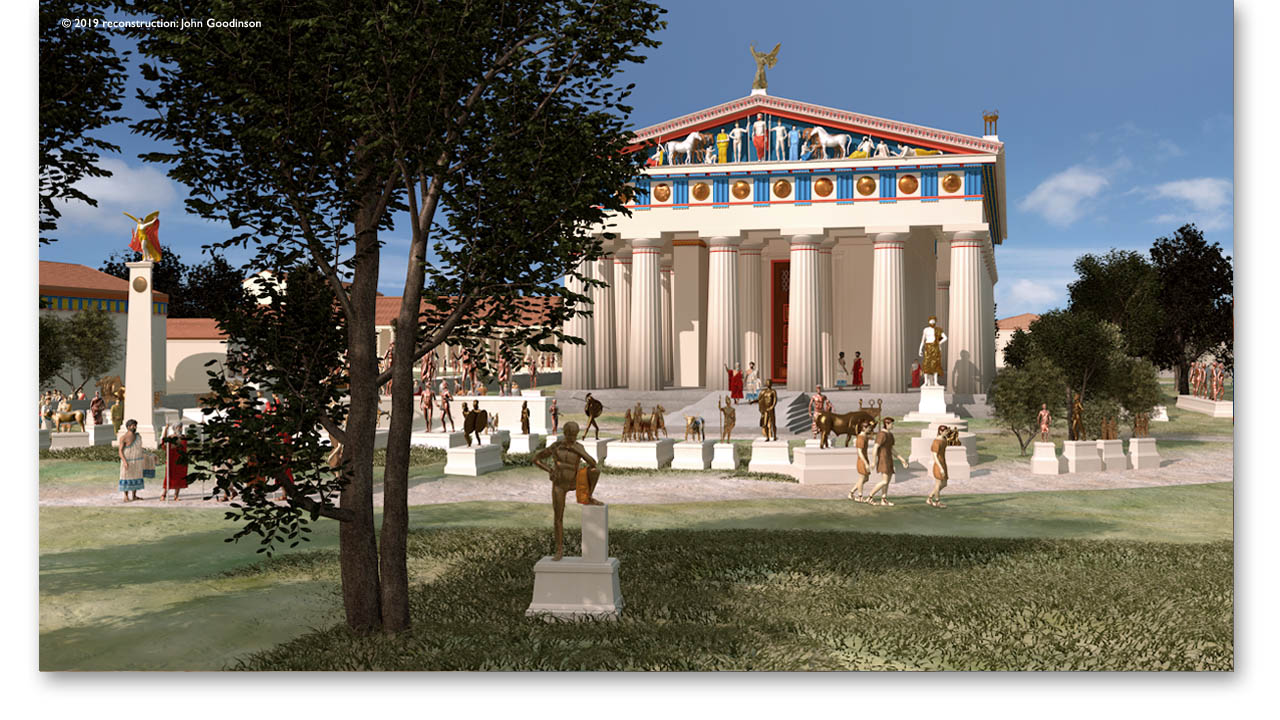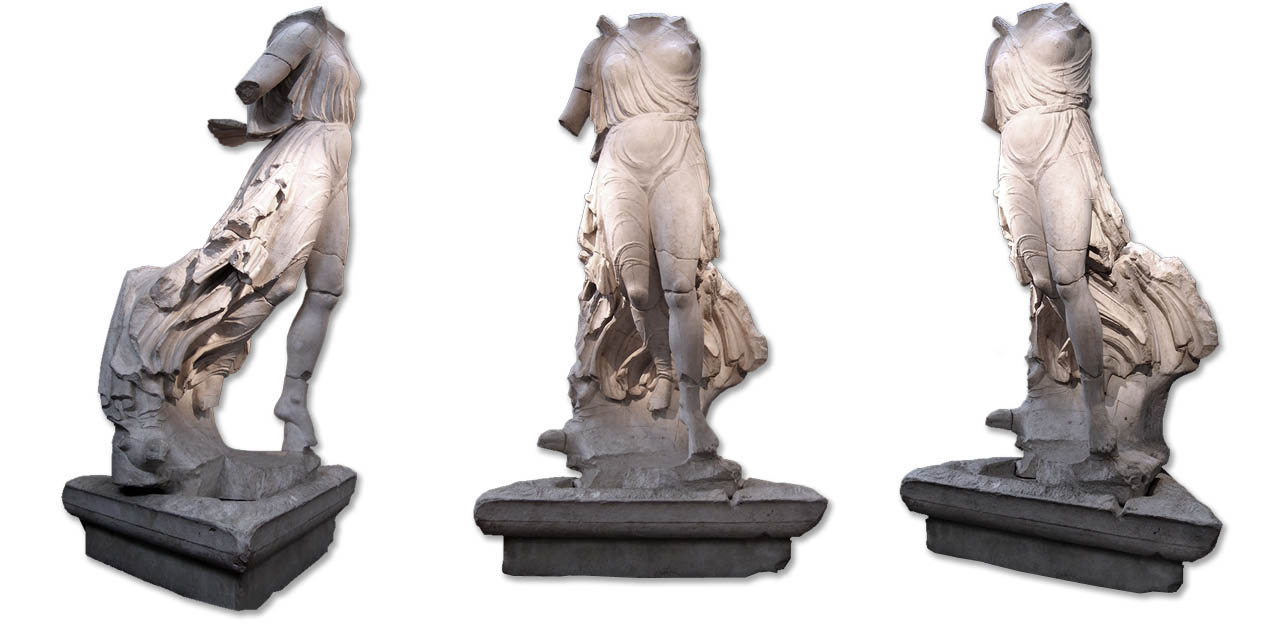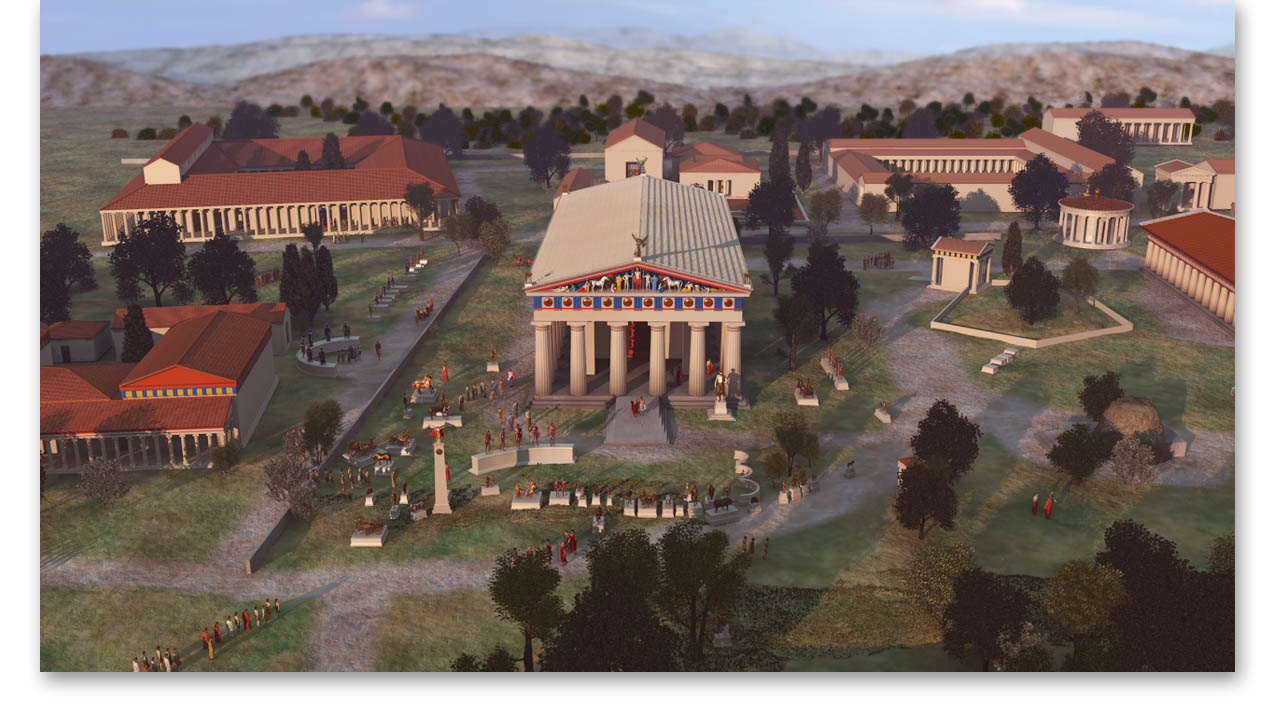The Nike of Paionios at Olympia was erected by two small, ancient Greek poleis (city-states) – Messenia and Naupaktos. Analysis of the style of the sculpture suggests that the commission and dedication of the nike probably took place around 420 B.C.E., perhaps sometime within the brief respite provided by the Peace of Nikias (421 B.C.E.) during the long-lasting Peloponnesian War (431-404 B.C.E.). The triangular pillar monument on which the nike rests was adorned with three captured shields, one on each side. The base of the monument itself was inscribed with the following text: “The Messenians and the Naupaktians dedicated [this nike] to Olympian Zeus, a tithe from
war [spoils]. Paionios of Mende made it and was the victor [in the competition] to make
the temple’s akroteria.”
“The Messenians and the Naupaktians dedicated [this nike] to Olympian Zeus, a tithe from
war [spoils]. Paionios of Mende made it and was the victor [in the competition] to make
the temple’s akroteria.”
This inscription is both incredibly informative and rather mysterious.
On one hand, the inscription clearly gives us the names of the dedicants and the sculptor, two critical pieces of historical and archaeological information. The two cities of Messenia and Naupaktos were Athenian allies during the Peloponnesian War. The two poleis were also closely linked themselves; a large group of Messenian refugees had been settled in Naupaktos by the Athenians in ca. 455 B.C.E.
Most importantly, the Messenians were bitter enemies of Sparta. Wars, blockades, raids, assassinations, abductions, and various attempts at genocide had dominated the relationship between the two city-states since the eighth century B.C.E. The two peoples literally had hated each other for centuries; the ancient Spartans had no more ferocious foes. The identity of the sculptor, Paionios of Mende, is also important.
Paionios has been associated with a number of important ancient Greek sculptural commissions in the late fifth century B.C.E.: the temple of Apollo at Bassae, the akroteria of the temple of Zeus at Olympia, and have been involved in the development of the so-called “Rich Style” – a transformative formal revolution based in Athens that emphasizeda luxurious, almost decadent, approach to drapery, pose, and figure. The inscription gives us this important data. But to what “war spoils” does the inscription refer? Is there a particular battle to which this inscription makes reference?
There probably is.
In 425 B.C., the Messenians, Naupaktians, and their Athenian allies defeated a force of Spartan hoplites at the Battle of Sphakteria. In a display of bravado that was to make him the most powerful man in Athens (for a moment), the Athenian general and demagogue, Cleon, attacked this Spartan force with a huge company of Athenian hoplites supported by archers and peltasts from Messenia and Naupaktos.
After a fierce siege that seems to have lasted some weeks, multiple skirmishes, and daring final maneuver by the Messinian general Comon, the Spartans were defeated. This victory rocked the Greek world. Hitherto, the Spartans had enjoyed a near legendary reputation of utter invincibility on the battle field.
At Sphaketeria, however, the combined Athenian, Messenian, and Naupaktian forces had shattered this myth forever. To make matters more interesting, the allies had taken prisoners. Over 292 hoplites (120 of which were “pure blooded” Spartiates) were taken in chains to Athens by the general Cleon and his allied commanders. This move fundamentally shifted the balance of power in the Peloponnesian War.
Cleon threatened to execute his hostages if Sparta invaded Athenian territory thus halting the brutal annual invasions of Attica that had occurred since 431 B.C.E. The Athenians also launched a massive new building campaign in the city and tripled the annual amount of imperial tribute that they collected from subjected poleis the moment the prisoners were in custody.
Indeed, at this moment, the Athenians and their allies believed that they had won the war. Victory was at hand.
The Nike of Paionios thus served to commemorate two distinct triumphs. The first was a military triumph, a victory in battle, almost certainly the Battle of Sphakteria in which the Messenians and Naupaktians played such an important role. The second was an artistic triumph, a triumph won by Paionios himself, an achievement through which his own virtuosic, sculptural skills were awarded the highest honors by the goddess of victory herself.


